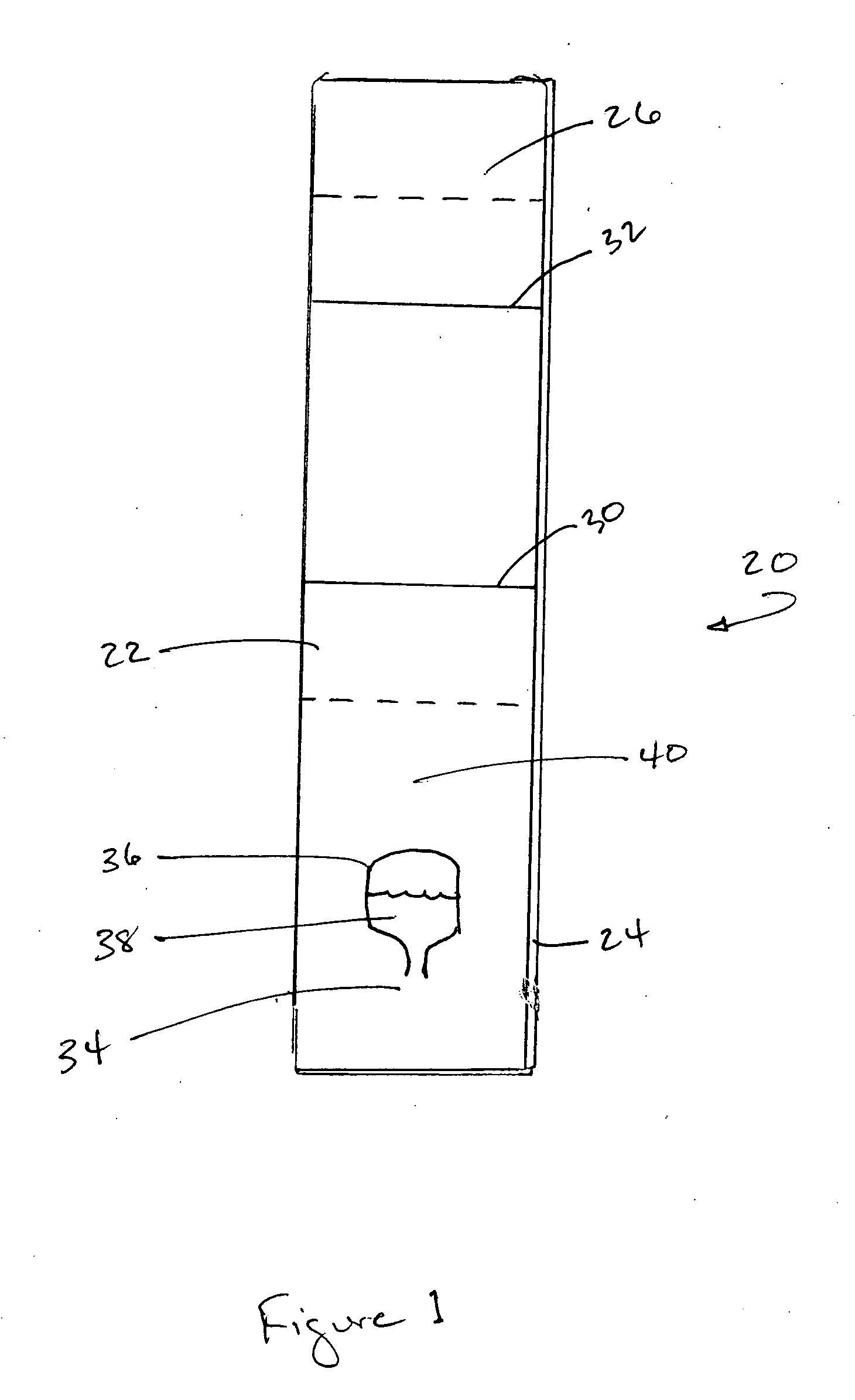Sample-efficient lateral flow immunoassay
- Summary
- Abstract
- Description
- Claims
- Application Information
AI Technical Summary
Benefits of technology
Problems solved by technology
Method used
Image
Examples
example
[0049] This idea was tested with the following experimental setup:
[0050] Goat anti-mouse antibody (“GAM”) was diluted in phosphate-buffered saline (PBS) (pH of 7.2) to 0.1 mg / ml, and striped onto Millipore nitrocellulose HF120 membranes using a Kinematic 1600 coating machine at a dispense rate of 1 ul / cm and a bed speed of 5 cm / s. Scipac C-reactive protein (CRP) (Sittingbourne, Kent, UK) was diluted in water to give a final concentration of 2.6 mg / ml and was striped below the GAM test line at a dispense rate of 1 ul / cm. The cards were left to dry at 37° C. for 1 hour.
[0051] VF2 (from Whatman Corp., Clifton, N.J.) and GF33 (glass fiber) conjugate pad material (from Millipore Corp., Billerica, Mass.) was cut to 30 mm by 34 mm bands using a hand operated guillotine cutter. The monoclonal antibody for the conjugate was Mab1 (catalog number 10-C07, from Fitzgerald Industries International, Inc. of Concord, Mass. 01742-3049 USA). This CRP antibody was conjugated to 20 nm diameter gold p...
PUM
| Property | Measurement | Unit |
|---|---|---|
| Luminescence | aaaaa | aaaaa |
Abstract
Description
Claims
Application Information
 Login to View More
Login to View More - R&D
- Intellectual Property
- Life Sciences
- Materials
- Tech Scout
- Unparalleled Data Quality
- Higher Quality Content
- 60% Fewer Hallucinations
Browse by: Latest US Patents, China's latest patents, Technical Efficacy Thesaurus, Application Domain, Technology Topic, Popular Technical Reports.
© 2025 PatSnap. All rights reserved.Legal|Privacy policy|Modern Slavery Act Transparency Statement|Sitemap|About US| Contact US: help@patsnap.com

